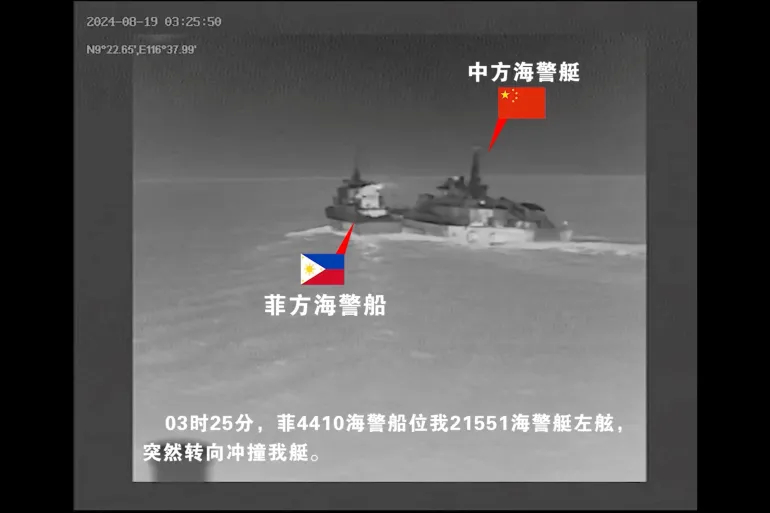World
Philippines and China Report Ship Collision at New South China Sea Flashpoint

The Philippines and China have reported a collision between ships at a new flashpoint in the South China Sea, heightening tensions in the contested region.
A collision occurred between ships from China and the Philippines in the contested South China Sea amid a confrontation where both sides accuse each other of causing it.
At Sabina Shoal, which is located approximately 140km (86 miles) to the west of Palawan – the closest major land mass, a collision occurred at 3:24am on Monday local time and 19:24 GMT on Sunday.
The Philippines has been accused by Gan Yu, a spokesperson for China Coast Guard of unlawfully entering the waters surrounding the controversial atoll and intentionally crashing into their vessel.
Gan stated that the China Coast Guard implemented lawful measures to gain control over the Philippine vessels.
Located over 1,300km (808 miles) from China’s Hainan Island are the Spratlys. These islands are also claimed by Brunei, Malaysia, Taiwan and Vietnam.
The National Task Force on the West Philippine Sea in Manila contradicted China’s version of events, stating that Beijing was to blame for conducting “unlawful and aggressive maneuvers” near the shoal which resulted in damage sustained by two coastguard vessels.
According to the statement, the clash led to collisions that caused harm to the Philippine Coast Guard [PCG] vessels’ framework. Pictures were circulated demonstrating these damages.
According to Manila, the Cape Engano and Bagacay coastguard vessels were en route for personnel resupply on Flat Island when they collided.
In addition to the harm caused to Cape Engano, it was reported that a Chinese coastguard vessel collided with Bagacay twice – once on its port side and again on its starboard side, causing only minor structural damage.
According to the statement, “Our foremost duty as PCG is maintaining the safety and security of our maritime territory. We will also take appropriate actions against any risks that may jeopardize our national concerns.”
Manila and Beijing have experienced escalating tensions due to the latter’s claim of nearly all territories in the South China Sea through its nine-dash line, despite a 2016 international court decision invalidating it.
The collision at Sabina Shoal happened within a span of two weeks since the air incident involving China and Philippines militaries occurred in Scarborough Shoal. Beijing had taken control over Scarborough from Manila back in 2012.
During July, the two nations reported a “tentative accord” regarding Second Thomas Shoal after numerous conflicts arose over delivering supplies to Filipino sailors residing on a navy vessel that ran aground there back in 1999.
In April, the BRP Teresa Magbanua, a vital patrol vessel of the Philippine Coast Guard, was dispatched to Sabina. This decision followed Filipino scientists’ discovery of sunken heaps of crushed corals in its shoals which raised concerns that China potentially aimed to construct a facility in the atoll.
A ship was sent by the China Coast Guard to Sabina at a later time.
